|
Size: 1226
Comment:
|
Size: 3666
Comment:
|
| Deletions are marked like this. | Additions are marked like this. |
| Line 4: | Line 4: |
== March 2016, 03 (Thursday) == We analyzed the first beammap we made yesterday on Mars (scan velocity of 60arcsec/s). As shown on the following figures, two feedlines on array 1 and 3 were very noisy so the recovered sensitivities are quite bad for these KIDs. We get 1014/1140 = 89% valid detectors on array 1, 847/1020 = 83% on array 2 and 918/1140 = 81% on array 3. {{attachment:A1_sensitivity_Mars.png||height=400}} {{attachment:A2_sensitivity_Mars.png||height=400}} {{attachment:A3_sensitivity_Mars.png||height=400}} We also analyzed the last beammap made on Uranus. As shown on the following figures there were no more noisy feedline but one electronic box on array 1 was not working during the acquisition. We therefore lost all the corresponding KIDs. We get 875/1140 = 77% valid detectors on array 1, 844/1020 = 83% on array 2 and 906/1140 = 79% on array 3. {{attachment:A1_sensitivity_Uranus.png||height=400}} {{attachment:A2_sensitivity_Uranus.png||height=400}} {{attachment:A3_sensitivity_Uranus.png||height=400}} == March 2016, 02 (Wednesday) == ''' OBSERVATIONS FIRST DAY ''' * Opacities around 0.3 (@1mm) and 0.2 (@2mm) during the whole night/day. Atmosphere quite stable as well. Beautiful view! * Main goals today: about 2h30 integration on faint source (NEP-L about 35mJy@1mm). Beam maps on Mars (2 with different telescope speeds - 60arcsec/s and 70arcsec/s) and 1 on Uranus (with nominal telescope speed 60arcsec/s) * We got a good skydip 20160302s49 to compute C0 and C1. * Before each map we performed several pointing-focus-pointing sessions (good boys!) ------------------------------------------------------------------------------------------- * 02:00UT We go to the sky for the first time. Clear sky, opacity about 0.2 pretty stable. The sky noise seems good on the 3 arrays (see the plots below). A little worse on array 3 (1mm NIKEL DC). {{attachment:run4_noisesky_array2.png||height=500}} {{attachment:run4_noisesky_array1.png||height=500}} {{attachment:run4_noisesky_array3.png||height=500}} '''Figure.''' Noise on the sky for the 2mm, 1mm (array 1) and 1mm (array 3). * The noise is 1.5Hz/sqrt(Hz), 2Hz/sqrt(Hz), and 3Hz/sqrt(Hz) for the 2mm, 1mm (array 1) and 1mm (array 3) respectively. |
|
| Line 9: | Line 50: |
| * Status of the Instrument: | * '''Status of the Instrument:''' |
| Line 11: | Line 52: |
| - The cryostat is at the nominam temperature T_100mK=147mK | - The cryostat is at the nominam temperature T_100mK=150mK |
| Line 13: | Line 55: |
| Line 14: | Line 57: |
| Line 15: | Line 59: |
- We checked the modulation of the HWP and all the polarisation facilities of nika2. It seems to work nominally. |
|
| Line 23: | Line 70: |
| {{attachment:run4_noise_array2.png||height=600}} {{attachment:run4_noise_array1.png||height=600}} {{attachment:run4_noise_array3.png||height=600}} | '''THE NOISE is taken with the window on the cryostat. It is in agreement with the previous observing campaign. No traces of the pulse tube. ''' {{attachment:run4_noise_array2.png||height=600}} {{attachment:run4_noise_array1.png||height=600}} {{attachment:run4_noise_array3.png||height=600}} |
| Line 26: | Line 80: |
THE NOISE is taken with the window on the cryostat. It is in agreement with the previous observing campaign. No traces of the pulse tube. |
Back to the NIKA2 run 4 main page
March 2016, 03 (Thursday)
We analyzed the first beammap we made yesterday on Mars (scan velocity of 60arcsec/s). As shown on the following figures, two feedlines on array 1 and 3 were very noisy so the recovered sensitivities are quite bad for these KIDs. We get 1014/1140 = 89% valid detectors on array 1, 847/1020 = 83% on array 2 and 918/1140 = 81% on array 3.

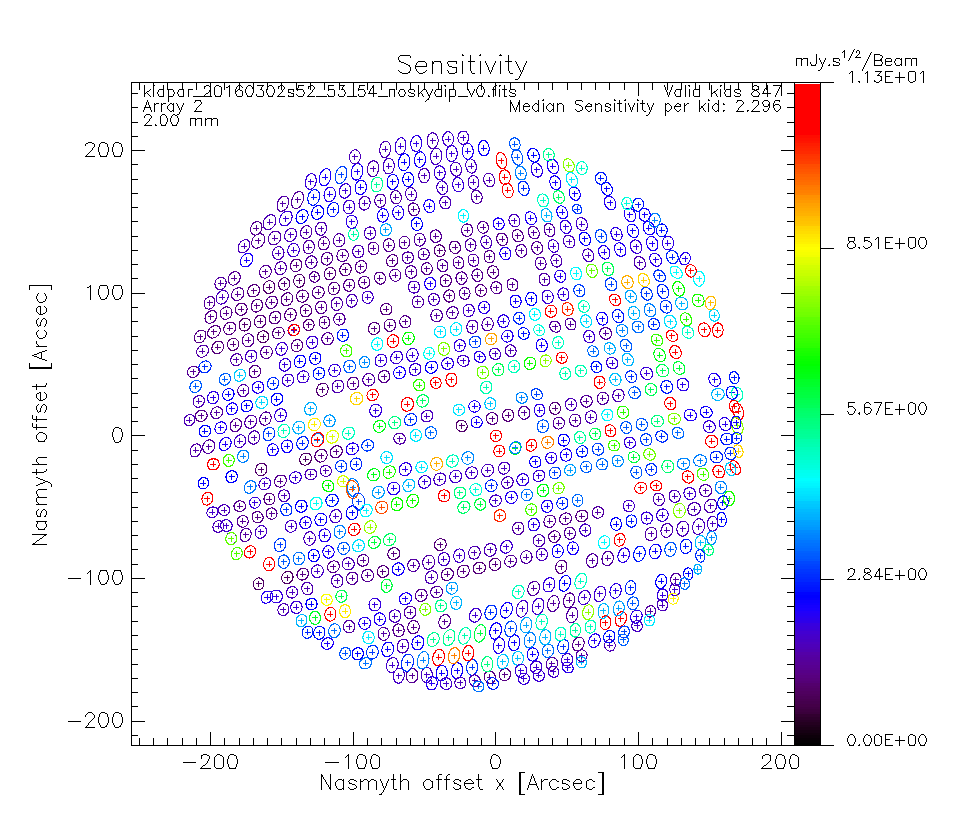

We also analyzed the last beammap made on Uranus. As shown on the following figures there were no more noisy feedline but one electronic box on array 1 was not working during the acquisition. We therefore lost all the corresponding KIDs. We get 875/1140 = 77% valid detectors on array 1, 844/1020 = 83% on array 2 and 906/1140 = 79% on array 3.
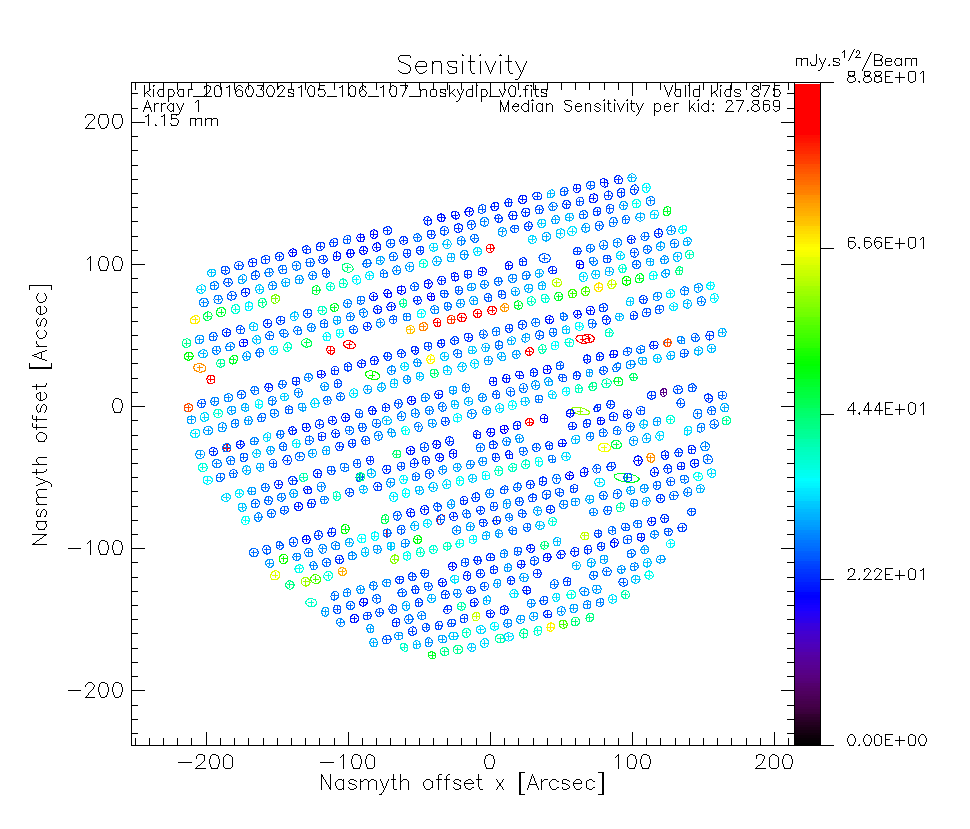
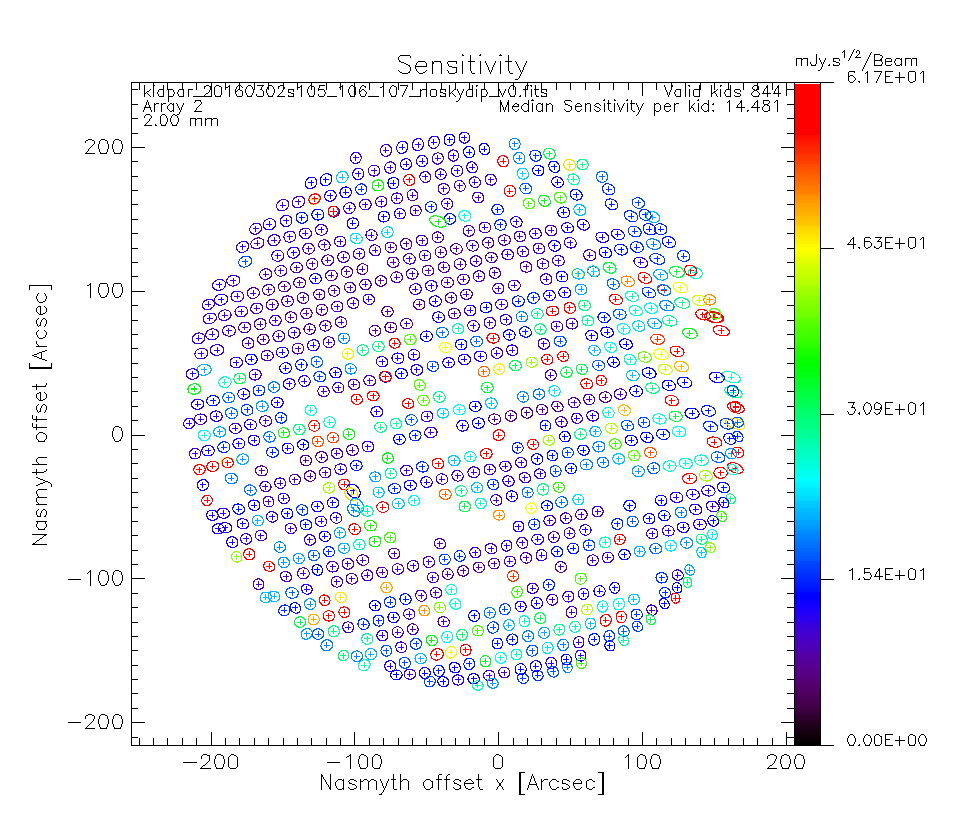

March 2016, 02 (Wednesday)
OBSERVATIONS FIRST DAY
- Opacities around 0.3 (@1mm) and 0.2 (@2mm) during the whole night/day. Atmosphere quite stable as well. Beautiful view!
- Main goals today: about 2h30 integration on faint source (NEP-L about 35mJy@1mm). Beam maps on Mars (2 with different telescope speeds - 60arcsec/s and 70arcsec/s) and 1 on Uranus (with nominal telescope speed 60arcsec/s)
- We got a good skydip 20160302s49 to compute C0 and C1.
- Before each map we performed several pointing-focus-pointing sessions (good boys!)
* 02:00UT We go to the sky for the first time. Clear sky, opacity about 0.2 pretty stable.
The sky noise seems good on the 3 arrays (see the plots below). A little worse on array 3 (1mm NIKEL DC).
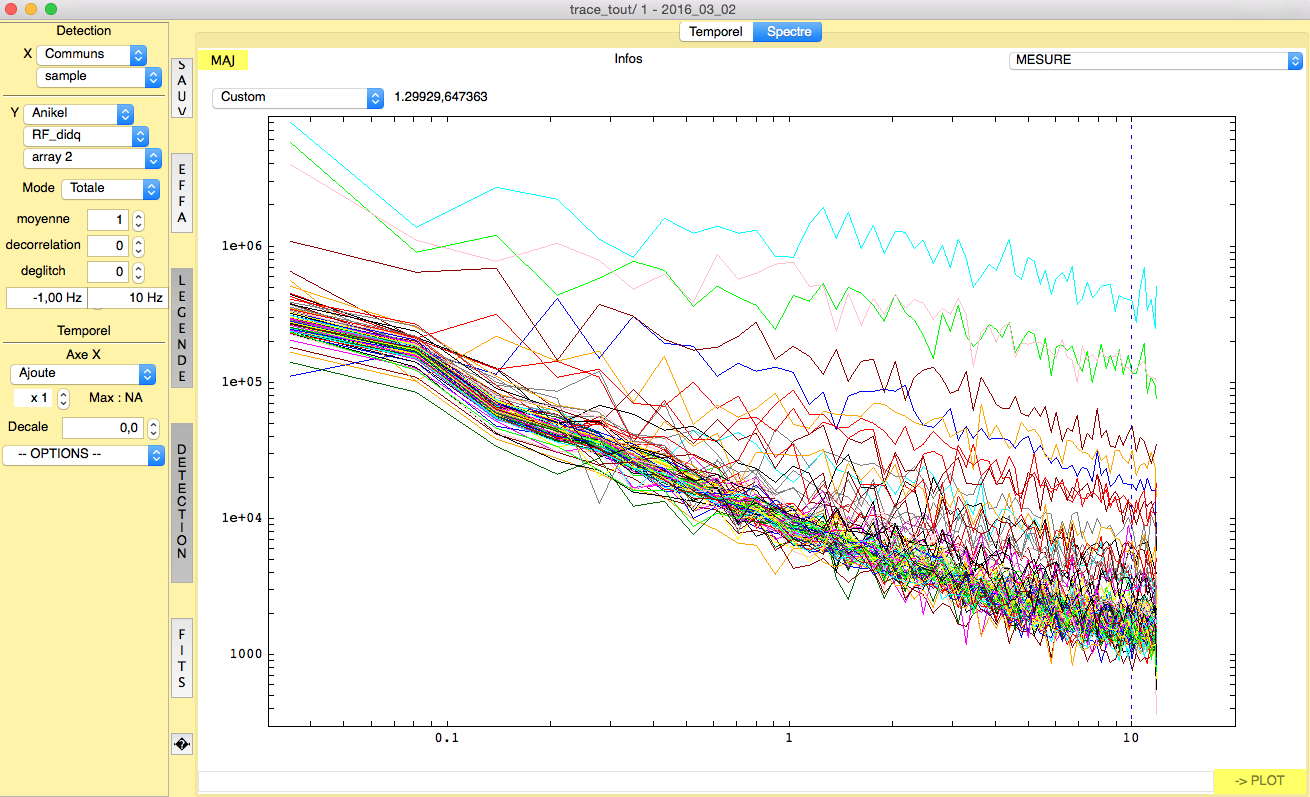
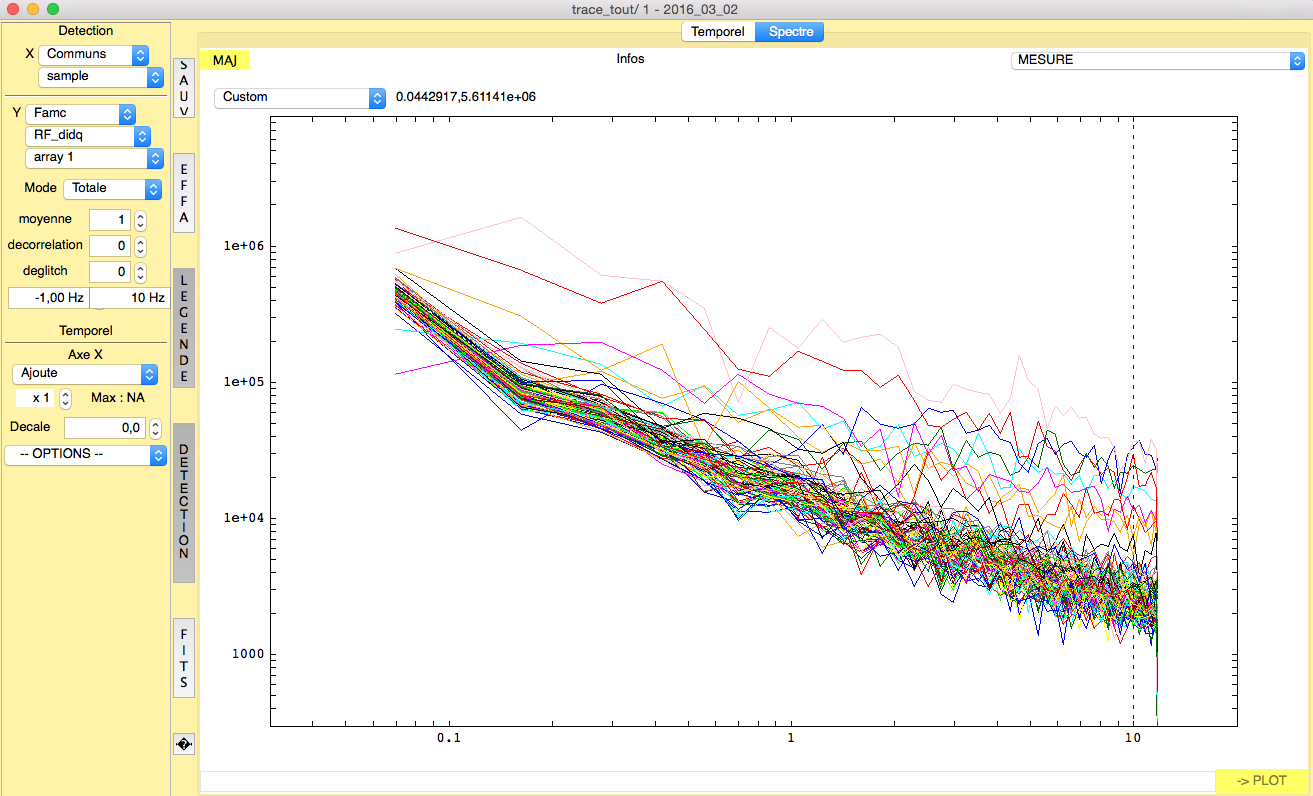
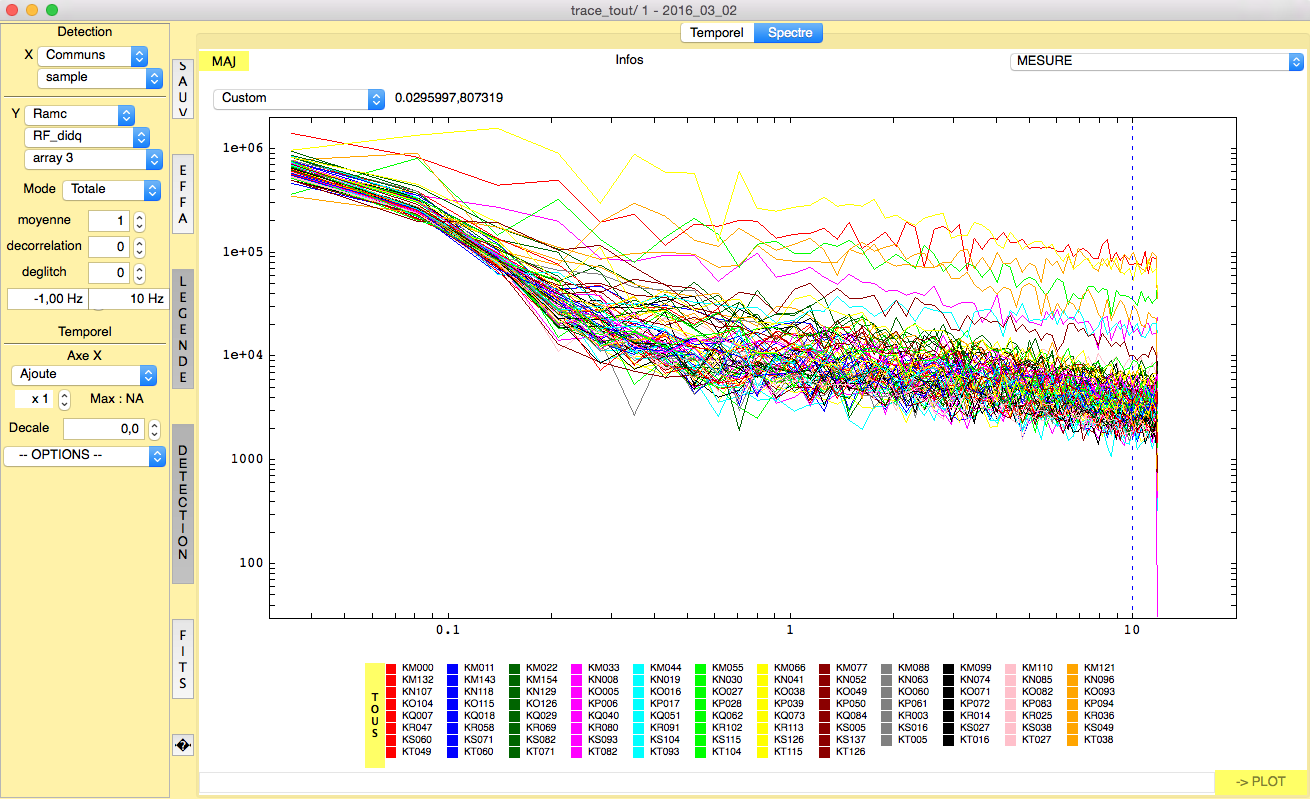
Figure. Noise on the sky for the 2mm, 1mm (array 1) and 1mm (array 3).
* The noise is 1.5Hz/sqrt(Hz), 2Hz/sqrt(Hz), and 3Hz/sqrt(Hz) for the 2mm, 1mm (array 1) and 1mm (array 3) respectively.
February 2016, 29 (Monday)
* Andrea arrived at the telescope.
* Status of the Instrument:
- The cryostat is at the nominam temperature T_100mK=150mK
- All the 20 feedlines are connected.
- The acquisition works nominally (few problems in the morning concerning the ports closed in nika2)
- We are producing normal,compressed and mini file on nika2 and mac12 during the night to check if they are right. First check is ok. We will keep checking tomorrow morning.
- We checked the modulation of the HWP and all the polarisation facilities of nika2. It seems to work nominally.
Hereafter some plot to check the good health of NIKA2:
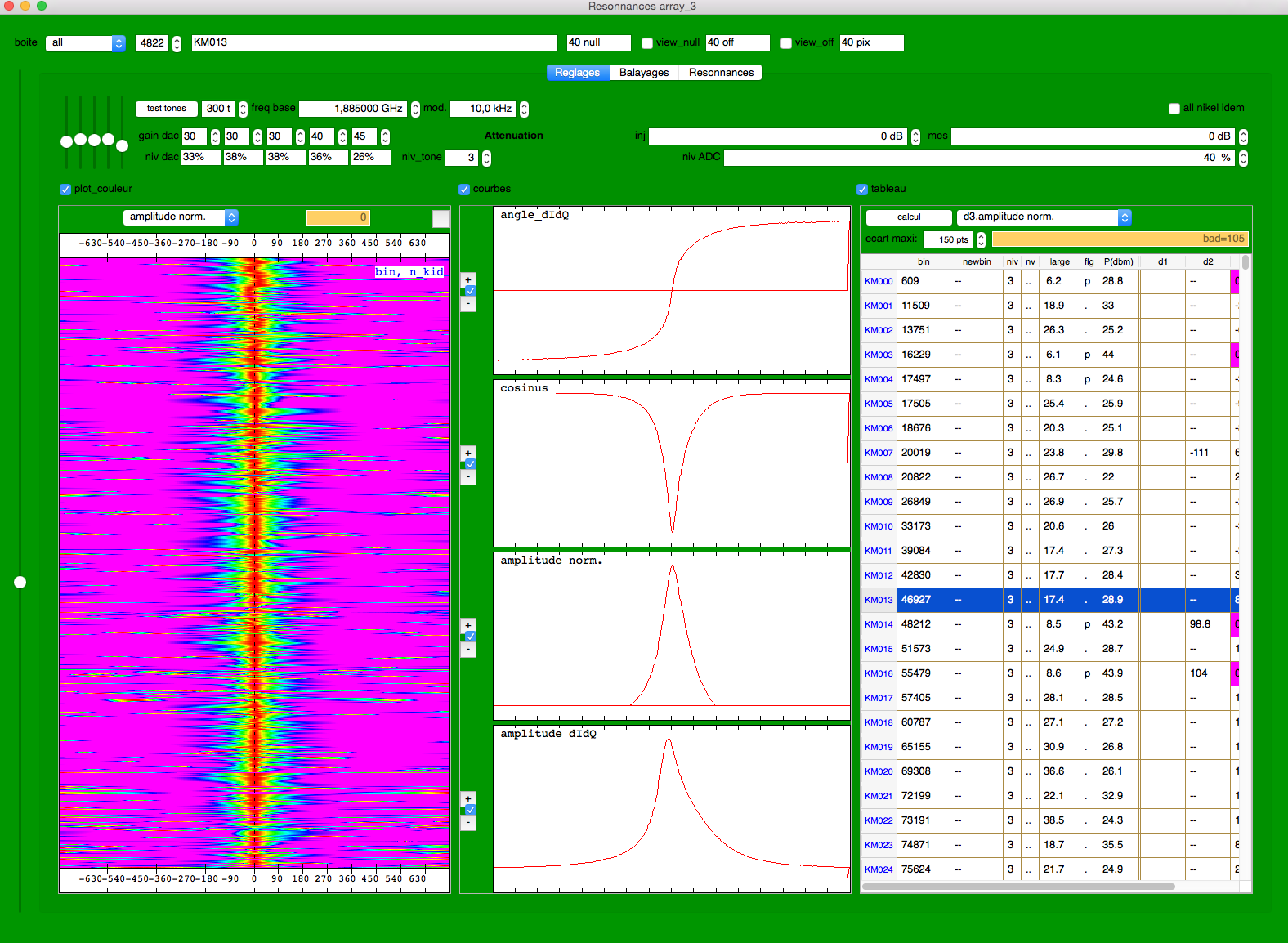
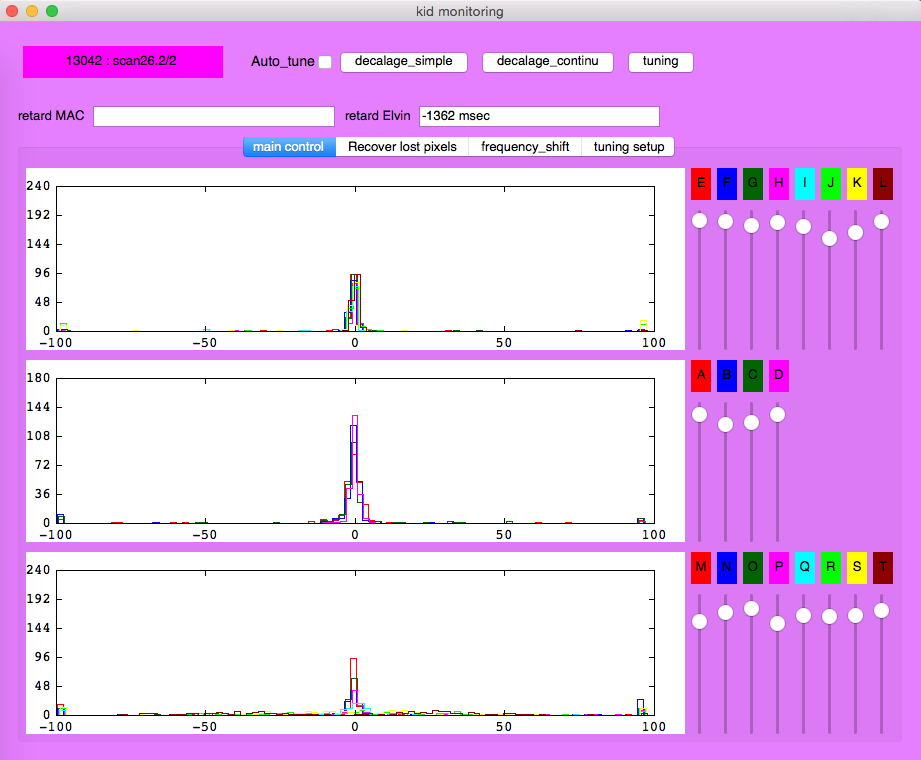
Figure. Left: trace of the 1140 pixels of array 3; right: monitor with all the 20 boards tuned.
THE NOISE is taken with the window on the cryostat. It is in agreement with the previous observing campaign. No traces of the pulse tube.

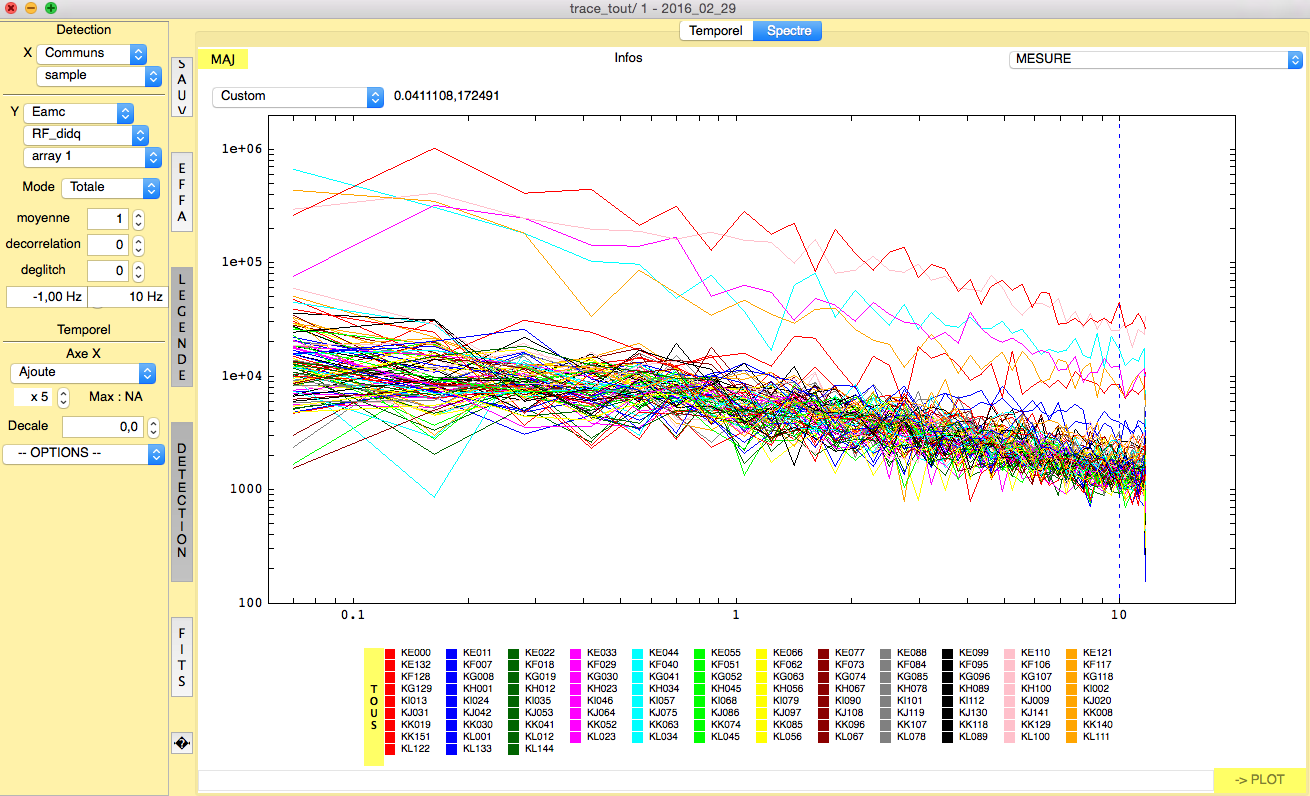
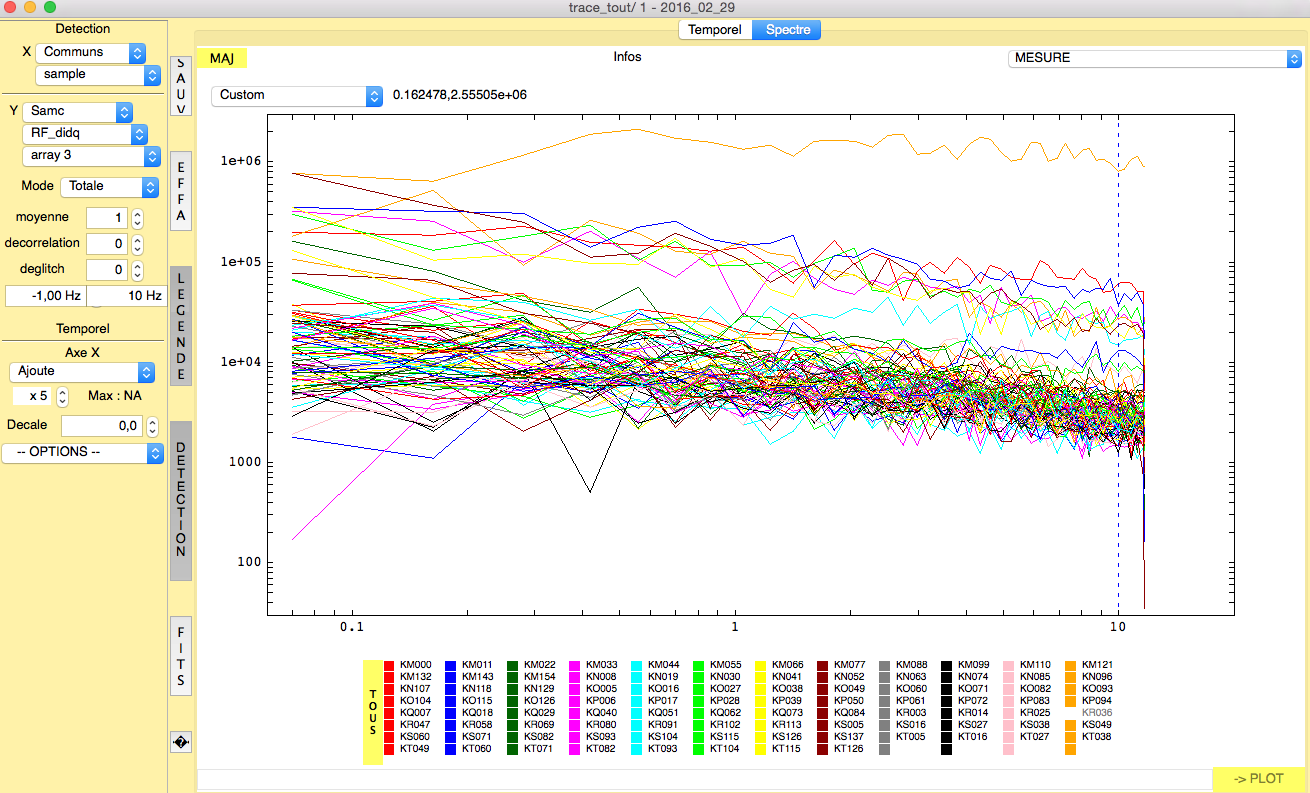
Figure. Noise with the window on respectively the 2mm, 1mm NIKEL_RF (array 1) and 1mm NIKEL_DC (array 3)
